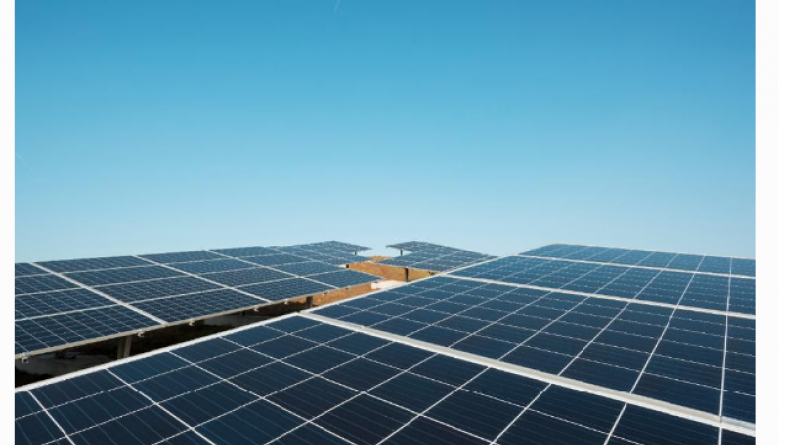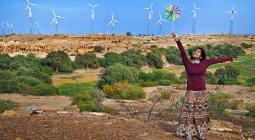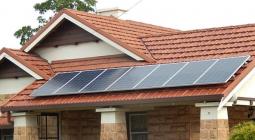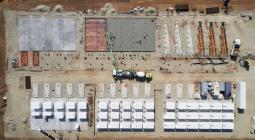Automotive And Energy Industries Drive Compatible Innovation.

The automotive and energy markets are on the cusp of seismic shifts. The automotive market is transitioning from simple fossil fuel-powered vehicles to smart, electric vehicles (EVs) as it enters the e-mobility era. Simultaneously, the electric grid is shifting from one based on centralized and dirty power stations to a smart, interconnected network based on distributed renewable energy and storage.
This clean, modern network will replace the current aging infrastructure and achieve much-needed energy security, sustainability, reliability, flexibility and efficiency. While these may seem like separate transitions, there is a remarkable, and perhaps surprising, synergy between the two industries. The convergence of the automotive and energy industries during their respective transitions makes perfect sense as they share a similar trajectory, common technology and will soon become interdependent. Furthermore, their convergence is actually necessary to help accelerate the advancement of these technologies and provide both economic and environmental benefits to all stakeholders.
Two Growing Industries
As the EV and smart grid markets continue to grow, their market penetration is expected to surge by 2030. While still regarded as immature, the global EV market is predicted to increase globally from 1 million EVs purchased in 2018 to approximately 20 million in 2030. This is due to initiatives like the International Energy Association’s EV30@30, a commitment from 16 countries to reach 30% new EV sales by 2030. Following suit, automotive manufacturers are stepping up to meet this demand by electrifying their fleets. The tipping point for transportation electrification, when EV sales surpass gas/diesel, is estimated to occur between 2025-2030.
On the other hand, the solar energy market is a more mature market and has steadily grown over the past 15 years, as the global share of renewable electricity expanded to nearly 27%. While solar energy constitutes about 3% of global electricity production, solar energy is rapidly becoming a larger portion of the energy mix. PV installations increased by 138% in the past 5 years and is expected to grow another 46% by 2022. In fact, more solar energy capacity was added in 2017 than the net of coal, gas and nuclear combined, according to the IEA's World Energy Outlook. Moreover, the Solar Energy Industries Association predicts by 2021 there will be more than 100 gigawatts (GW) of solar installed in the United States, with an annual total exceeding 14 GW.
Straining The Grid
While this simultaneous growth of the EV and PV markets provides a number of benefits for the environment and consumers, it also creates a tremendous strain on the electric grid. Until recently, the main task of the electric grid was to ensure that it instantaneously met fluctuating demand by ramping up or down production based on demand. However, with the penetration of solar energy into the grid, another layer of complexity was added. Today, the grid is not only required to cope with fluctuating demand, but also with inherently intermittent generation that has fast drop-off times in the evening. This makes it more challenging to maintain an equilibrium between supply and demand. Further increasing the complexity, soon millions of EVs will use the electric grid as their power source. Since EV charging requires high, continuous demand, it places considerable strain on the grid — especially if EVs are simultaneously charged in the evening.
These new pressures on the grid brought by the transition to solar energy and EVs underscore the need for the grid to modernize and become smarter and more interconnected. To make this shift, the grid needs to leverage smart, responsive electronics, such as solar inverters, that can act as mini-controllers. These smart electronics will manage solar production, batteries and other electric devices in the home, including EV chargers. This means that the grid can become smarter by controlling hundreds of thousands of solar energy systems in the cloud and telling them when it needs energy, when to store energy in the battery or when to start or stop EV charging. This not only helps electric utilities manage solar generation challenges, but it also enables better management of the more predictable stresses caused by EVs. Fortunately, implementation of an interconnected grid, such as virtual power plants, is already underway — and in the near future, steps will be taken to leverage predictive analytics, big data and machine learning to secure a more autonomous grid.
An Evolving Energy Market
The same shift that the grid is making towards deploying an interconnected and autonomous energy ecosystem, in some ways reflects the next stages of e-mobility. With the first step of e-mobility being electrification, and the future stages about creating bi-directional communication between EVs so that they can share information for a smarter, safer, and easier driving experience, while also leveraging automation.
At first glance, the technology overlap between EVs and solar energy may seem unusual, but with both these ecosystems essentially being energy markets, it makes sense. Both EV powertrains and solar energy systems share the same core technology – DC/AC inverters, batteries, DC/DC converters, communication and software. One particularly important component is the inverter, which acts as the brain of both powertrains and PV systems. In the past few years, the PV industry has achieved significant improvements in inverter technology that makes them more power dense, efficient and cost-effective. This is just one example of how improvements in one industry may benefit the other.
A Smart Energy Ecosystem
As innovation continues, so too can technology transfer, leading to acceleration and convergence of both industries. For instance, EVs could be better integrated to the grid with bidirectional charging, batteries doubling as a power source for homes when the grid is down or being charged from solar energy with an EV-charging inverter. Together, these two merging industries will take another significant leap forward towards developing a complete smart energy ecosystem in the home and help support a smarter grid. This will lead to a more stable, financially-viable and environmentally-friendly energy network that empowers both utilities and individuals alike, a change that is both necessary and exciting.
3 May 2019





